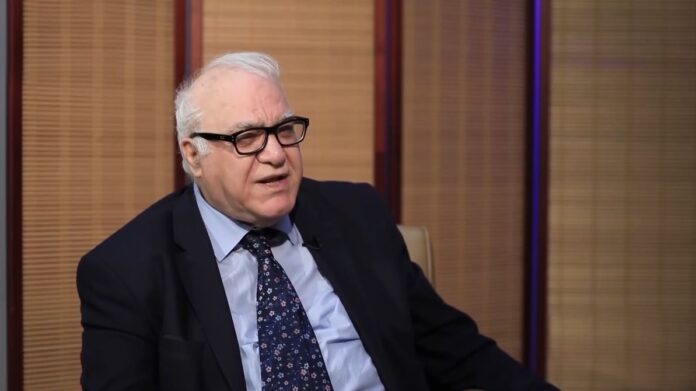The Economic Studies Section of AL-Bayan Center for Studies and Planning held a dialogue with the Prime Minister’s Adviser on Finance the economy specialist Dr. Madah Mohamed Saleh. The dialogue included recent changes in the exchange rate in Iraqi markets.
AL-Bayan Center: How does the foreign currency demand go so high? Besides, public spending is close to previous years? How does the high price and quantity required come together despite a decline in some luxury and welfare goods after the high inflation rates resulting from the devaluation of the local currency? How did monetary and fiscal policy fail to address the rise, which in the White Paper was aimed at addressing the external sector imbalance in the current account and which should be reflected in the internal imbalance in the general budget?
Dr. Mudher Muhammad Saleh: First of all, we have to go back to our previous study on the moderation of monetary demand, which was published just before the adoption of the Federal General Budget in the Congress of Deputies. Today’s super-demand for foreign exchange comes as a visible problem that can be described as super-super-compensation demand for foreign exchange outside the needs of foreign trade. After speculators dried up their dollar balance during the first quarter of this year 2021 with the hope of that the Congress of Deputies raising the value of the dinar again and speculating at the price until the last moments, this is accompanied by an uncertain false rumor.
The fall in official dollar demand by the market during the first quarter of 2021 was a case of disposing dollar balances as quickly as possible both within the country and those outside. No one was aware of how the foreign trade of the private sector was financed by near-interruption of sales of the central bank window over a period of three months, a sharp drop in demand for the official dollar from the central market and a high exchange rate for the prevailing market, rather, the explanations began that the demand for the dollar at its previous normal high levels was only one fact: capital flights, or that most of it was an outflow against nothing?
Today, the corresponding factor prevailing in the parallel market, which represents the current phase of the dinar disposal, comes from the fear that it will deteriorate under the false noisesed information that there is a further devaluation of the exchange rate, a false information released by speculators, a phase that has led to increased demand for the dollar and the disposal of the dinar to make up for previous windfalls.
So, it’s a confusing monetary market whose decisions depend on a loss of efficiency due to too much information changes and loss of information purity, which represents the low white noise in the information that the stable market usually circulates, the opposite happed and it reflected on decisions that exacerbate the turbulent demand to replace dinar with dollars…! Today’s cash market needs high confidence and information certainty and may not be fully available under confused political conditions, lies and false rumors that continue to cost the country’s foreign exchange reserves. Noting that the Central Bank’s monetary policy is clear, based on the provision of stability and stability to the central exchange rate over the next long period, is the only valid information that should be adopted to stabilize foreign currency demand.
AL-Bayan Center: No doubt that there are hidden forces, but aren’t there policies that limit it, because there are developing countries that do not have oil and their exchange rates are stable?
Yes, this phenomenon remains temporary and not permanent, ending with the doubling of central bank sales and the tightening of the ability to withdraw domestic liquidity (maximizing sterilization) until the monetary market settles, as stated, the price of speculation is the waste of more central reserves.
AL-Bayan Center: Is the devaluation of the exchange rate contributing to addressing the structural imbalance in the budget? Are there recommendations or solutions for decision makers in the monetary sector to protect low-income people on the one hand, and to maintain reserves and support the real sector on the other?
It addressed some of the structural imbalances in the public finances, and the remedies for poverty and low living standards due to the price effects of exchange rate reduction were addressed by government price support and, in particular, the activation of the quantity and monthly ration card system to include a wider range of eligible persons within the social welfare system to achieve an equitable distributive effect. The idea of a forward-looking bank to finance the foreign trade of the private sector through the mechanisms for opening up documentary credits has already been put forward since 2016 and the subject has been studied in vain.
AL-Bayan Center: Can’t bonds be issued at a real interest rate and paid in foreign currency to ensure the diversity of instruments of government debt on the one hand and monetary stability on the other?
The Central Bank has already filed on behalf of the government and was not accepted by the public and was bought by some speculative banks in 2016. The acceptance and circulation of securities, though measured, is a long-term culture and its applications are limited by the loss of trust as well. Otherwise, how do you explain that 50 trillion dinars are in the homes of people outside the exported cash mass.










